On paper, Patagonia is simply a region. A 260,000-square-mile expanse of land that covers the southern half of both Chile and Argentina as they narrow into nothingness at the bottom of the globe. But in person, Patagonia feels like a test lab for adventure, where every possible environmental variable has been turned up to 11.
Deep, inaccessible fjords and thick, temperate rain forests blanket Chilean Patagonia in blues and greens while never-ending golden grasslands, called pampas, define the interior of Argentine Patagonia. In between, massive glaciers charge through the snarled peaks of the Andes before crashing into milky-blue alpine lakes. At the end of the road, Tierra del Fuego offers a brutally beautiful finale to it all.
Ready to get planning? Here’s what this guide will cover:
- Why Visit Patagonia?
- The Top Regions and Sites in Patagonia
- Top Adventure Activities in Patagonia
- Unique Things to Do In Patagonia
- How to Plan Your Visit to Patagonia
- How to Get There
“The best part about Patagonia is that it’s such a wild and untouched place,” says Kelsey Wenger. “Spaces are immense, peaks are jagged and rivers are pristine. The journey to the end of the world isn’t easy, but those who come to Patagonia looking for adventure will not leave disappointed.”
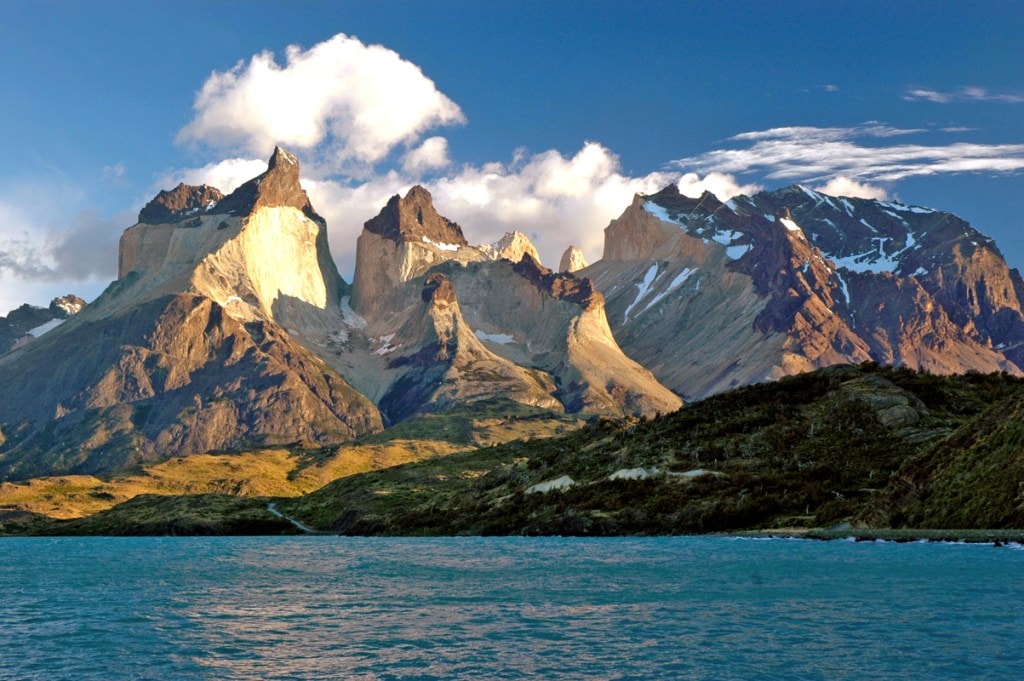
Raw, rugged landscapes are par for the course on any adventure in Patagonia.
Before you head into the wilds of Patagonia, there are a few things to note. First, Patagonia is truly massive. It’s as long as the entire west coast of the United States. Second, getting around takes time. There are no huge, multi-lane highways, and, while you can fly domestically within each country around Patagonia, it’s not possible to fly between Chilean and Argentine Patagonia airports. That reality makes bus travel the quickest option for long distances. All this is to say, unless you have several weeks or months of travel to fill, you’re likely going to have to choose a region of Patagonia to focus on for your trip. This guide will help you make that choice and highlight the various regions of Patagonia, so you can make an informed decision.
Why Visit Patagonia?
Coasts, glaciers, mountains, lakes, rivers, grasslands, fjords, rain forests and more. While you’re at it, throw in the chance to experience two very different cultures and a wide range of activities, and you’ll find that Patagonia has something for everyone.
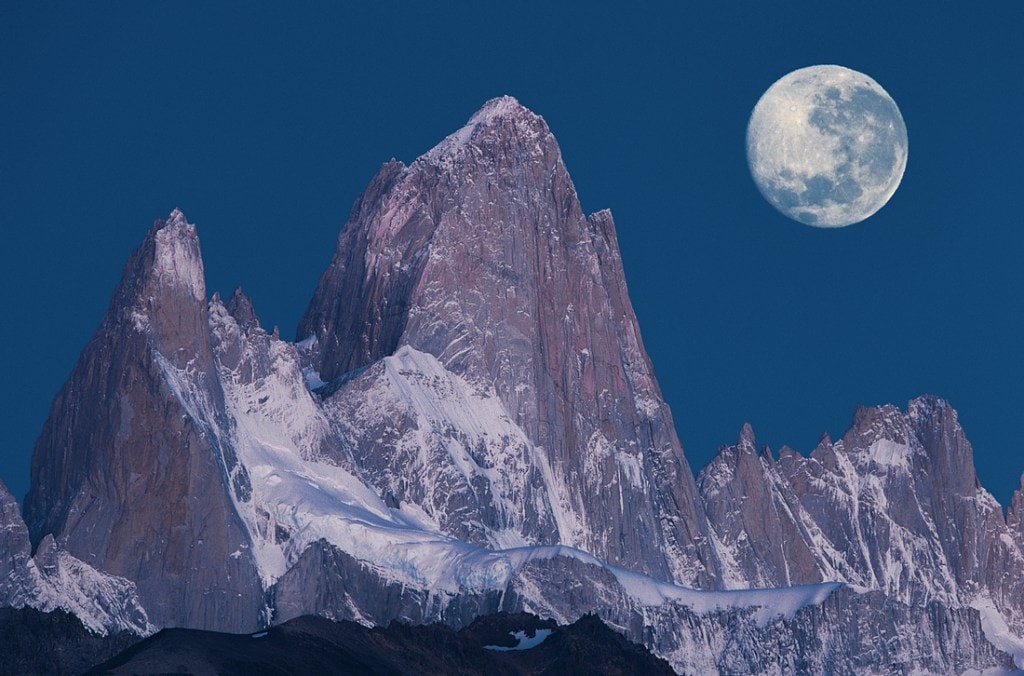
Witnessing otherworldly beauty is a common occurrence in the Patagonia region of South America. (Photo Credit: DigitalVision/Getty Images)
Hikers choose from an endless array of destinations, from day trips to glacier-fed lagoons to multiday treks deep into the heart of the Andes. Skiers might dig their poles into the slopes of dormant volcanoes or visit the southernmost ski resort on earth. Kayakers can paddle beside penguins and sea lions in the Land of Fire or explore freshwater caves saturated in swirling colors. Cyclists can explore winding lakeside roads and whitewater enthusiasts can boat through temperate rain forests. The list goes on and on.
It is a region so expansive and sparsely populated that getting off the beaten path isn’t just easy, it’s almost unavoidable.
But, what’s the best reason to visit Patagonia? Despite its popularity, despite its reputation, despite its otherworldly beauty, it is a region so expansive and sparsely populated that getting off the beaten path isn’t just easy, it’s almost unavoidable.
Top Regions and Sites in Patagonia
Los Glaciares National Park (Argentina)
As the name suggests, this national park is a wonderland of glaciers, which squeeze between the Andes before breaking off into pale blue alpine lakes. On the south side, near El Calafate, you’ll find the famous Perito Moreno Glacier. Visit by boat or hop in a kayak to get up-close views of the glacier calving (breaking off) into the pearlescent waters of Lago Argentino. On the north side, near El Chaltén, Wenger recommends walking straight out of town to get closer to the stunning spires of Cerro Torre (6.7 miles) and Mount Fitz Roy (6.6 miles). “Both of these hikes are incredible and everyone should do them in their life,” says Wenger.
Lakes District (Chile and Argentina)
At the northern end of Patagonia, thick pine forests blanket the foothills of the Andes, and wrap around deep blue lakes. On the Argentine side, head to Nahuel Huapi National Park. Cyclists can spend their days pedaling sun-dappled roads that wind around a never-ending series of lakes, and hikers and climbers can challenge themselves on the granite walls and trails around Frey. In winter, skiers and snowboarders can take to the slopes of Cerro Catedral, a dormant volcano, and spend their nights exploring the charming streets of lakeside San Carlos de Bariloche (commonly just called Bariloche). On the Chilean side, climbers are drawn to exceptional trad and sport climbing of Valle Cochamó, just outside of Puerto Montt.
Torres del Paine National Park (Chile)
Chile’s Torres del Paine is arguably the most popular national park in all of Patagonia. Bucket-list backpackers are drawn to trek the “W,” a 31-mile one-way route that winds past the park’s most iconic features including Grey Glacier, Frances Valley and the Torres, triplet peaks whose twisted summits embody the wild beauty of Patagonia. But there’s more than just the “W” here. For those with more time, the “O” circuit (74 miles) offers everything that’s included with the “W,” along with some extra solitude in the park’s deeper backcountry.
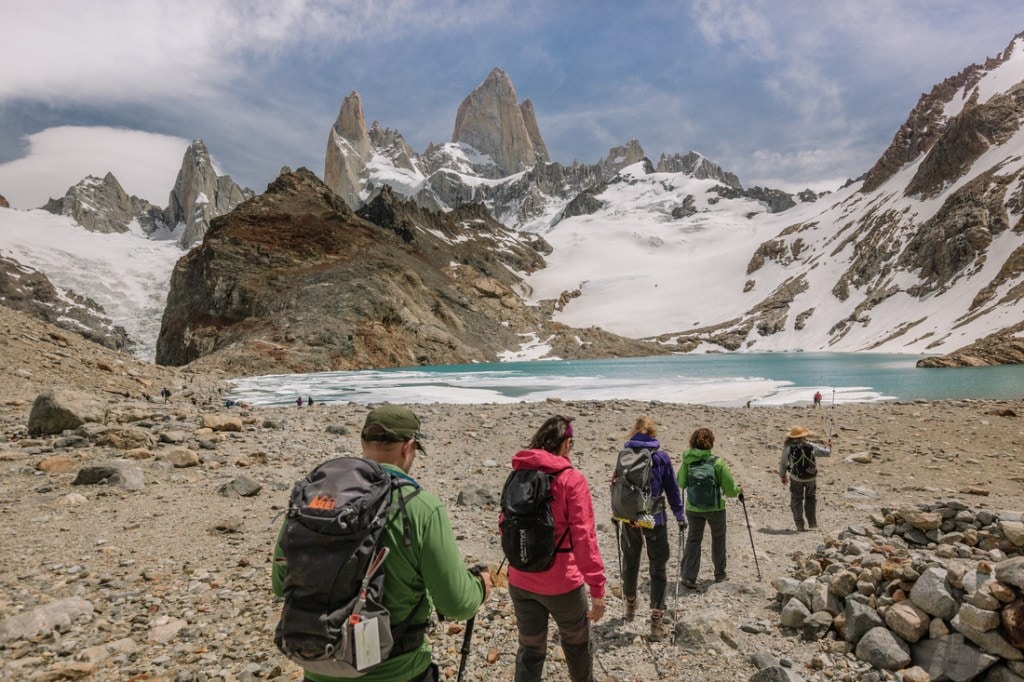
A group treks beneath the Fitz Roy massif in Los Glaciares National Park.
Photographers who want the good stuff should head straight to the Base Las Torres Trail (0.7 miles) for postcard-perfect views of the towers. Day hikers can spend the afternoon exploring the winding creek that runs along the Valle del Frances Trail (3.2 miles) or scope out Grey Glacier from sweeping lookouts on the Lago Grey Trail (6.7 miles).
Keep in mind, restrictions and rules change frequently in Torres del Paine. For example, on some routes, including the “O” circuit, hikers can now only travel counterclockwise. Do your research before heading down and expect a few logistical hiccups, like ironing out the specifics of reserving campsites, before you get out on some of the longer routes.
Tierra del Fuego (Argentina)
The Land of Fire is Patagonia’s raw, southern finale. Often overlooked in favor of Patagonia’s more accessible, northern regions, Tierra del Fuego offers lots for adventurers willing to go the extra mile (or hundreds). Kayak through the Beagle Channel alongside penguins and sea lions, fly down the slopes of Cerro Castor, the southernmost ski resort in the world, or seek out emerald waters and alpine terrain on a day hike to Laguna Esmeralda (6 miles).
General Carrera Lake/Lake Buenos Aires (Chile and Argentina)
Quiet villages and mountain views surround this massive lake which spans the border between Argentina and Chile, thus the dual names. Beyond the picture-perfect scenery, it’s the Marble Caves that make the lake a can’t-miss destination. Over thousands of years, waves have eroded calcium carbonate deposits on the shoreline to create smooth caves that reflect the water in swirling shades of blue. You can visit the caves by boat or kayak. Morning is the best time to visit, especially between February and September, when peak glacial melt makes conditions ideal for super-saturated colors.
Valdes Peninsula (Argentina)
See the coastal side of Patagonia with a trip to the protected nature reserve along the Valdes Peninsula. This UNESCO World Heritage site is one of the best places on earth to see the endangered southern right whale, as well as elephant seals, sea lions and orcas. Base your explorations out of Puerto Madryn and don’t forget to take a side trip to nearby Punta Tombo, where one of the world’s largest populations of Magellanic penguins make their home.
Aysen (Chile)
“There are huge tracts of Patagonia that are still waiting to be discovered in the Aysen region,” says Wenger. In the middle of Chilean Patagonia, the Aysen region beckons travelers who are looking for a less-crowded alternative to Torres del Paine. The dramatic peaks and trails of Cerro Castillo National Park rival those you’ll find anywhere else in Patagonia. For views of Cerro Castillo, framed by a candy-blue lake, lace up your boots for a walk to Laguna Cerro Castillo (4.4 miles). To Aysen’s southwest, Laguna San Rafael National Park is a sure bet for glacier views, as well as the tallest peak in Chilean Patagonia (Monte San Valentin at 13,314 feet).
Top Adventure Activities in Patagonia
Patagonia is the perfect place to choose your own adventure. From hiking and biking to kayaking and whitewater rafting, there’s no limit to how you experience this magical place. Below is a list of some of the region’s most popular activities, but that’s not to say it’s exhaustive. In addition to what’s below, you’ll find places to go horseback riding, windsurfing, scuba diving, bikepacking and a host of other awesome activities in Patagonia.
1. Hiking
Visitors wanting to explore on foot have many options in the Patagonia region. Day hikers should bag sunrise views of Mount Fitz Roy on the relatively easy Mirador de los Condores trail (0.9 miles) from the town of El Chaltén, and take in the Lakes District from Cerro Lopez (2.7 miles). Long-distance trekkers can tackle the crown jewel of Patagonia hikes by embarking on the one-way 31-mile “W” route through Torres del Paine or get way off the beaten path on the challenging Huemel Circuit (37.7 miles), which winds through the heart of Los Glaciares National Park.
2. Climbing
Patagonia is a climber’s dream destination. Whether you’re looking to get technical among the spires of Torres del Paine or do a bit of bouldering before dinner outside of El Chaltén, there’s almost always a route to explore nearby. In the north, don’t miss the exceptional trad climbing at Frey, in Bariloche, where you can expect sensational views, free camping and a nearby refugio (hut) that offers accommodation as well as cold beer. On the Chilean side, climbers have dubbed Valle Cochamó “the Yosemite of South America” for its big granite walls and waterfalls. You’ll find hundreds of trad and sport routes here, along with a sprinkling of bouldering and alpine climbing to round out your days. Plan on bringing your own gear. Rental shops aren’t common and there’s no promise you’ll get the type and quality of gear you want. To kickstart your climbing adventure, consider a local climbing guide like Mountaineering Patagonia, which offers full- and half-day climbing trips around El Chaltén, or Andescross, which leads multiday climbing excursions from Bariloche.
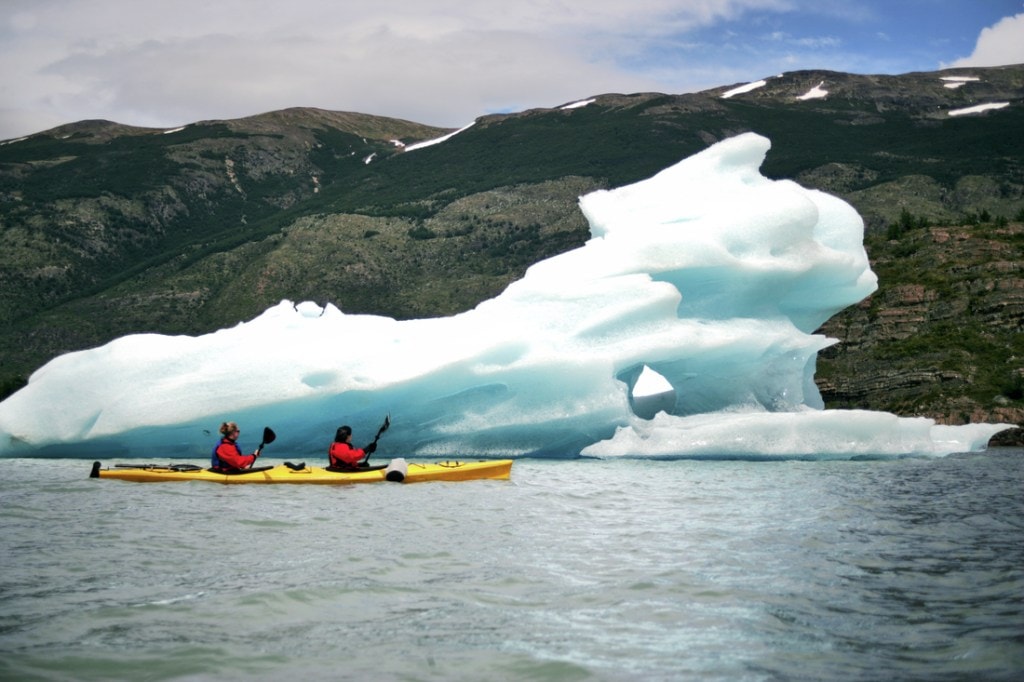
A tandem kayak explores the frigid, glaciated waters of a lake in the Patagonia region.
3. Biking
Road cyclists can explore both the Lakes District and Nahuel Huapi National Park around Bariloche, enjoying winding roads that snake through groves of aromatic pine. For those who want a bigger challenge, look no further than the Carretera Austral (771 miles) in Chile and Ruta 40 (3,227 miles) in Argentina. Neither of these primitive roads is completely paved, but both offer a spectacular look at parts of Patagonia few ever visit.
4. Kayaking
Paddle through the wake of crashing glacier ice at Perito Moreno Glacier or Grey Glacier, explore the often-overlooked Chilean fjords and Serrano River, cruise the lakes in Nahuel Huapi National Park or see Patagonia the way Darwin did by cruising through the Beagle Channel in Tierra del Fuego.
5. Whitewater Rafting
In Patagonia, whitewater rafting often requires an investment of multiple days. Guided tours offer incredible trips that straddle the border of Chile and Argentina. Look for trips embarking on the Rio Manso and Rio Futaleufú.
6. Skiing
There are three main ski resorts in Patagonia. Humble Cerro Castor is just outside Ushuaia and offers powder hounds the longest operating season in Argentina, typically June through October. La Hoya, in Esquel, is a wonderful off-the-beaten-path alternative in northern Patagonia. The biggest is Bariloche’s Cerro Catedral, which boasts 34 lifts, a 5.6-mile run and a convenient location next to the Swiss-inspired town.
Unique Things to Do In Patagonia
Exploradores Glacier
For those who want to trek on a glacier without having to rub elbows with scores of other tourists, skip the Perito Moreno Glacier and head to the Exploradores Glacier. Situated along Chile’s Carretera Austral, the Exploradores Glacier is also a great excuse to explore the heart of Chilean Patagonia. To get there, hook up with one of the guided tours that leave from Puerto Rio Tranquilo.
Pumalin National Park
This protected natural area along Chile’s coast started as a private conservation effort by The North Face founder, Douglas Tompkins (now deceased), and his wife Kristine McDivitt Tompkins, who in 2018 signed the land over to President Michelle Bachelet of Chile for a national park. It has since grown to cover a huge swath of land home to some of the oldest specimens of endangered Alerce trees and prime examples of temperate rain forests. Get there by taking the ferry from Puerto Montt to Chaitén, or by driving into the park from Coyhaique or Futaleufú.
Cueva de las Manos
The Cave of the Hands is a UNESCO World Heritage site that offers incredibly well-preserved hand paintings made more than 13,000 years ago. Just off of Ruta 40, between Perito Moreno (the town, not the glacier) and Bajo Caracoles, the paintings depict detailed river scenes, hands and animals important to early hunter-gatherer communities.
How to Plan Your Visit to Patagonia
Two countries, a bouquet of national parks and thousands of miles of open space make the logistics of visiting Patagonia a bit challenging for novice travelers. Here’s what you need to know about getting in, getting around—and finding a place to stay.
Where to Stay in Patagonia
El Calafate
Situated on the shores of Lago Viedma, El Calafate is one of the most popular bases for exploring Argentine Patagonia. With quick access to the south end of Los Glaciares National Park and the Perito Moreno Glacier, travelers can check off some of the most iconic stops without having to change accommodation.
Punta Arenas
This major shipping port is one of the largest cities in Patagonia and the most common point of entry for travelers on their way to Torres del Paine National Park. It’s a great place to gear up before your travels north, but it’s still nearly five hours from the park by bus, so it’s not a preferred place to stay.
Puerto Madryn
On the Argentine coast, Puerto Madryn is the ideal place to stay if your Patagonian itinerary includes the Valdes Peninsula, whale watching and penguins. Beachside cafes and plenty of charming accommodation make it a comfortable base of operations. Keep in mind, whale watching is seasonal. Aim for March and April if you want to catch sight of orcas, and between June and December for southern right whales.

A suite dome at EcoCamp Patagonia combines luxury, comfort and epic views.
El Chaltén
On the north side of Los Glaciares National Park, sleepy El Chaltén is the preferred base for trips to Mount Fitz Roy and Cerro Torre, along with tons of other trails and hiking options. El Chaltén is only a few hours from El Calafate by bus, and transfers take place daily, so these two cities are commonly paired in the same itinerary.
Bariloche
With no shortage of Swiss-chalet-style architecture, San Carlos de Bariloche can feel like a theme park at times. Usually referred to simply as Bariloche, this resort town is ideal for explorations of the Lakes District, Nahuel Huapi National Park, climbing at Frey and skiing at Cerro Catedral.
Puerto Montt
Climbers may want to split their time between Bariloche and Puerto Montt. Puerto Montt features quick access to Valle Cochamó and its charming seaside vibe make it a refreshing alternative to a lot of the most-frequented Patagonian towns.
Ushuaia
Tierra del Fuego’s central hub is where you want to go if kayaking the Beagle Channel or exploring Cape Horn are on your radar. Loads of accommodation options and direct flights from Buenos Aires make this picturesque waterfront resort town a fairly easy—albeit pricey—base to reach.
Coyhaique
This charming mountain town is the perfect base for explorations into Chile’s Aysen region, the Carretera Austral, Cerro Castillo National Park and Laguna San Rafael National Park. At the arts and crafts fair that fills the main square you’ll find woolen, leather and wooden goods made by local artisans.
Types of Accommodation
Lodges
High-end, luxury eco-lodges are becoming more and more common, especially around big-name sites like Torres del Paine. If you’ve got the budget, places like Tierra Patagonia, Awasi and EcoCamp Patagonia offer once-in-a-lifetime accommodation.
Estancias
Estancias such as Estancia Cristina, Estancia la Peninsula and Estancia Huechahue offer a unique opportunity to experience the celebrated life of the Argentine gaucho. These massive, isolated ranches typically include grand parillada meals (grilled meats), horseback-riding opportunities and entertainment, along with plenty of Malbec wine.
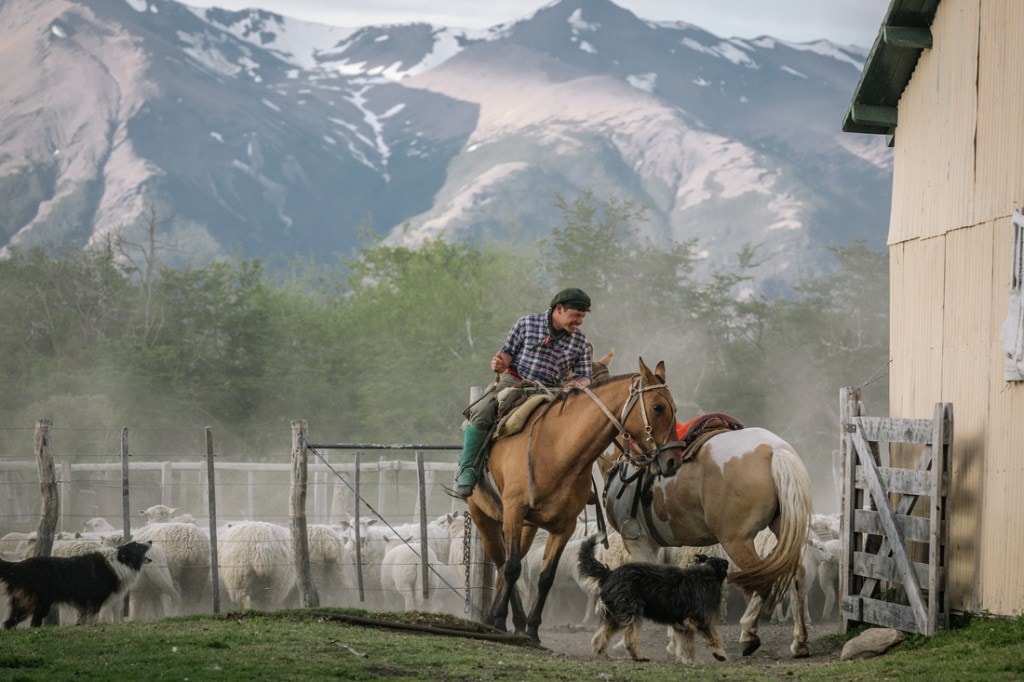
A man on horseback wrangles sheep with a sweeping mountainscape in the distance.
Cabins
A long-standing vacation rental industry, once hard to access from abroad, is now easier than ever to access thanks to the growth of internet booking sites. Cabins and cabanas offer some of the most unique, comfortable and affordable places to stay in and around Patagonia.
Hostels
A big portion of international visitors to Patagonia are backpackers, so it makes sense that hostels are among the most common types of accommodation. Luckily, booking hostels is easier than ever with convenient apps like Booking.com and Hostelworld.
Campgrounds
You’ll find campgrounds throughout Patagonia. Bathrooms, hot showers, clean water and barbecues are the standard amenities at most campgrounds. To find available sites, travel apps like iOverlander are useful.
Note: For visitors who plan on camping along the “O,” “Q or “W” treks in Torres Del Paine, reservations are required for campsites along the trails. Be advised, making online reservations for these campsites is exceedingly complicated. Depending on the site you want to reserve, you’ll need to visit one of three websites (fantasticosur, CONAF and Vertice Patagonia). There are also a limited number of campsites available to reserve at the visitor center in Puerto Natales, but don’t expect much luck here during high season.
Refugios
Refugios are one of the best parts about multiday treks in Patagonia. These basic hostel-style accommodations are situated in the backcountry, usually on more popular routes like the “W” trek and the climb to Frey in Bariloche. Availability and reservation logistics vary with each one. For Torres del Paine, you can often reserve spots using the same reservation sites used to book campsites.
Best Times to Visit Patagonia
“The main misconception is that are better months than others to travel, because Patagonia weather can be pretty crazy,” says Wenger. The best time to visit depends on what you want to get out of your Patagonia adventure. Keep in mind, seasons in the Southern Hemisphere are the opposite of those in the Northern Hemisphere, so plan accordingly.
Also, understand that Patagonia is stretched across a range of latitudes equivalent to the distance between Seattle and San Diego. Weather in the south is generally colder, so travelers with longer itineraries may want to prioritize their visits to coincide with the changing seasons if necessary.
Fall (March–May)
Changing colors and lighter crowds make fall an incredible time to visit. You may encounter some snowfall at higher elevations in southern Patagonia, but most sights should remain open.
Winter (June–August)
Expect most tourist destinations to shut down or have very limited hours. For skiers, the winter is a wonderful time to visit, although traveling will likely be limited to the areas directly around the resorts in La Hoya, Bariloche or Ushuaia.
Spring (September–November)
Spring wildflowers, lighter crowds and a return to warmer weather are another great off-season time to visit. However, hikers and climbers may still encounter snow at higher elevations.
Summer (December–February)
School is out in Chile and Argentina in January and February, so planning your summer trip for December is usually a good plan. Also, summer tends to be the windiest time of year in Patagonia, which can have a severe impact on temperatures, especially at higher altitudes.
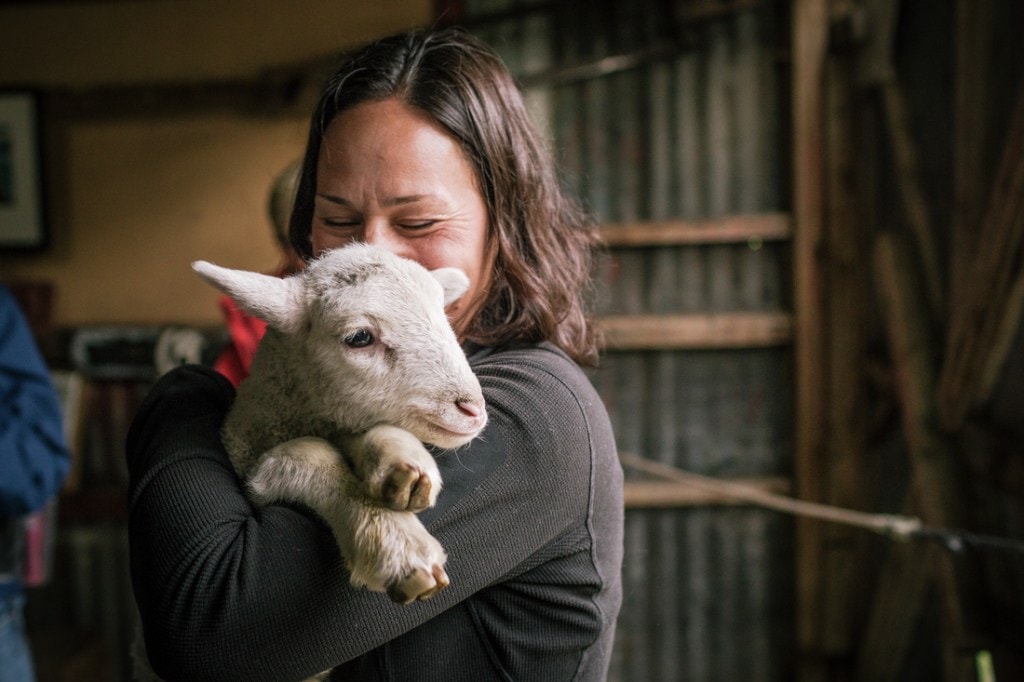
Taking some time off from her adventure itinerary, a traveler enjoys a cuddly snuggle.
How to Get There
Before booking your flight to Patagonia, think hard about where you want to base your trip. There are multiple airports throughout Patagonia, but you can only reach the Chilean airports from Santiago, and you can only reach the Argentine airports from Buenos Aires. There are no international flights between Chile and Argentina within Patagonia. Instead, if you want to cross the border, your only option is to hop on a bus or rent a car. With that in mind, here’s how to get in, get out, and get around in Patagonia.
Airports: Chile
Teniente Julio Gallardo Airport (PNT) in Puerto Natales
The closest airport to Torres del Paine operates limited service between early December and late February during high season.
El Tepual International Airport (PMC) in Puerto Montt
This northern Chilean airport offers the best access to the top of the Carretera Austral and Valle Cochamó, and is only a few hours by bus from Bariloche.
Presidente Carlos Ibáñez del Campo International Airport (PUQ) in Punta Arenas
Larger than Puerto Natales, Punta Arenas offers regular service from Santiago and is the main arrival airport for travelers headed to Torres del Paine. Keep in mind, to get from Punta Arenas to Torres del Paine, you’ll need to take a bus to Puerto Natales first and then book a separate bus into the park from there.
Balmaceda Airport (BBA) in Balmaceda
Balmaceda is in the heart of the Aysén region and a short bus ride from Coyhaique. It’s the ideal airport for those that want to visit Cerro Castillo National Reserve, General Carrera Lake and Laguna San Rafael National Park.
Airports: Argentina
San Carlos de Bariloche Airport (BRC) in Bariloche
In northern Argentina, Bariloche’s airport is ideal for exploring the Lakes District, Nahuel Huapi National Park and Cerro Catedral.
Almirante Marcos A. Zar Airport (REL) in Trelew
This coastal airport is convenient for visitors to the Valdes Peninsula.
Comandante Armando Tola International Airport (FTE) in El Calafate
With regular flights to Buenos Aires, El Calafate’s airport is the best place to fly into for explorations of El Chaltén, Los Glaciares National Park and the Perito Moreno Glacier. It can also serve as an access point for Torres del Paine, though getting there will require a border crossing.
Ferries
One of the most inaccessible areas of Patagonia is the Chilean fjords, which makes the Navimag Ferry an enticing option for many travelers. Traveling between Puerto Montt and Puerto Natales, the four-day, three-night journey isn’t for those who depend on speed or those who expect cruise ship amenities.
At its core, the Navimag Ferry is technically a cargo ship. Accommodations are in shared or private, minimalist cabins, plus your fare includes basic meals. While not luxurious, the ship does provide you with a phenomenal look at the Chilean fjords, if the weather cooperates, that is.
Buses
Buses are the gold standard for travel in Patagonia. For longer trips, luxury buses offer comfortable seats and onboard bathrooms. Overnight buses and longer trips may even serve food and show movies.
In most cases, booking bus travel at the station you plan to depart from is easiest. But advance booking online is possible through sites like Omnilineas and Plataforma 10. Keep in mind, bus routes that cross the border often get held up in border traffic that can delay your trip by hours. Account for these possible delays when planning your schedule.
Rental Cars and Campervans
For those who want more freedom, rental cars and rental campervans are an option. However, there are several things to keep in mind:
First, crossing the border with a rental car requires extra paperwork and extra fees.
Second, distances between top sights in Patagonia are vast—and often accessed via poorly maintained roads. This can mean adventure for some, and agony for others.
Third, be aware of any road or mileage restrictions imposed on your rental. Many agencies don’t allow their cars on rough roads, like Ruta 40. With all of those things in mind, creating a road trip along the Carretera Austral and Ruta 40 is one of the most unique ways to explore a litany of off-the-beaten-path destinations in Patagonia.
